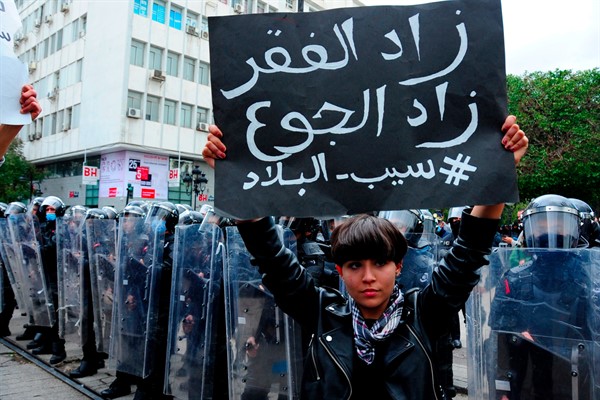As Tunisia marked the 10th anniversary of the removal of dictator Zine el Abidine Ben Ali on Jan. 14, people poured into the streets, defying a nationwide COVID-19 lockdown. While every January brings some form of popular protest around the revolution’s anniversary, things are different this year. Last month’s milestone serves as a grim reminder of what democracy has not brought: jobs, social justice and an end to endemic corruption. And this year, the country is in the midst of twin crises: an economy ravaged by the coronavirus pandemic and a deep political divide due to increasing polarization. Tunisians, often chanting protest slogans from a decade ago, have organized sustained demonstrations in recent weeks to decry all of these social ills.
This is not the first time Tunisia has found itself at a breaking point. In the months following the revolution in 2011, those who had lived their lives in the opposition or in exile were suddenly placed in charge, tasked with building a democratic state and negotiating over the essence of what Tunisia would represent in its new form. A subsequent power struggle led to the assassinations of two leftist political figures, Chokri Belaid and Mohamed Brahmi, in February and July of 2013, respectively, at the hands of hard-line Salafi jihadists. The killings nearly derailed the transition.
Mass protests have also periodically held Tunisia’s oil and gas production hostage, particularly at the extraction facilities in El Kamour, in the isolated and economically marginalized governorate of Tataouine. The main protests there took place in 2017, with another round last year, threatening a major part of the Tunisian economy. But these demonstrations have also succeeded in bringing more transparency to the oil and gas industry and securing commitments from the government for a more equitable distribution of jobs and profits to the areas where the oil and gas fields are located.

